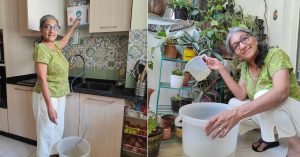How We Built Our Low-Cost Dream Sustainable Home Without Cutting a Single Tree
Laya Joshua from Kerala has used stones, old wood, and many such eco-friendly elements to build her dream sustainable home, for which no trees were cut.

“Preserving the past to enrich the future and live the present is our philosophy,” says Laya Joshua, a social worker and naturopathy expert from Ranni in Pathanamthitta district, Kerala.
And it’s the same philosophy that reflects in the Joshua family’s home, built almost 10 years ago.
They say they wanted a house that’s close to nature and closer to their hearts. Today, the 2,700 square-foot house, located amid lush green surroundings, looks exactly like they wanted it to — in Laya’s words, “simple and rooted in nature”.
Laya says that as an environmental worker and naturopathy practitioner for over 30 years, she was very particular about making the house as eco-friendly as possible. “We wanted to build a house without cutting or harming any trees,” she tells The Better India.

What makes the two-storey sustainable house even more unique is the materials used in its construction. The house is mostly made of boulders, forest stones and roof tiles. The wood used is mostly old or repurposed wood from demolished houses. All these materials were procured within a 15 km radius of the site, she says.
Searching for the right architect
Though Laya and her husband Joshua Philip were specific about building a sustainable home, she says that one of the challenges was to find an architect who would understand their demands.
“We were lucky to have met Mr Joseph Mathew, the architect of our house. He was very helpful and supportive while making our dream a reality,” says Laya.
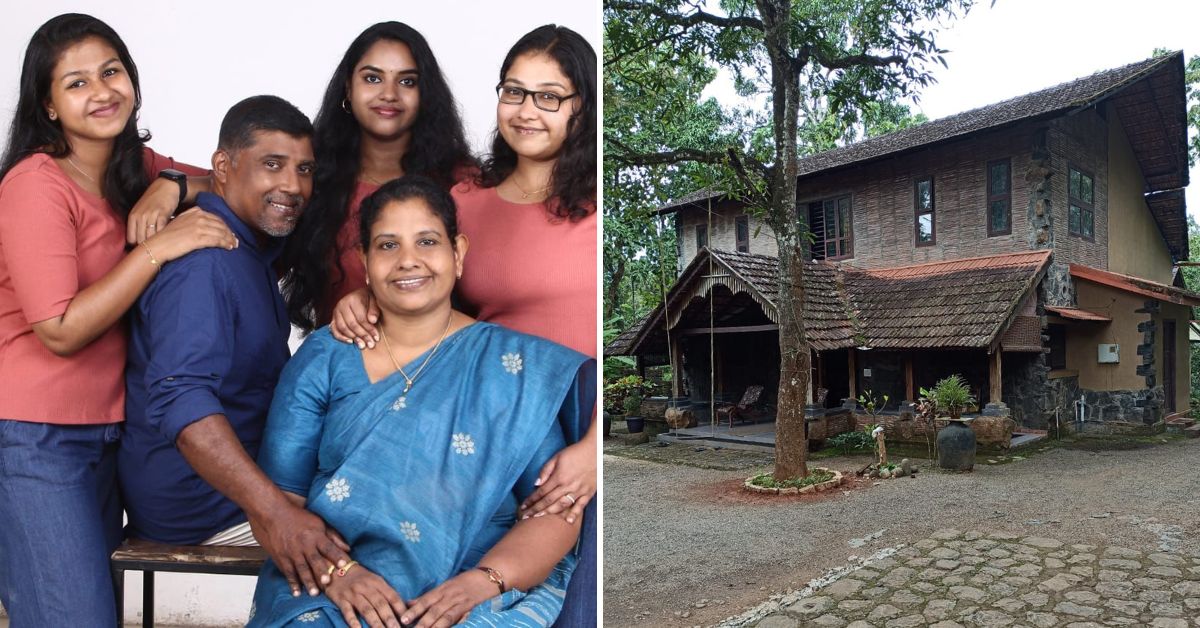
Joseph Mathew, an artist-turned-designer, says, “Laya and Joshua gave me the freedom to use my imagination and ideas to inculcate eco-friendly elements as much as possible. It was one of my early projects and our interests matched well.” Joseph has been building sustainable and cost-effective buildings for the past 14 years.
Walls built of boulders, forest stones and roof tiles
The house was built completely within eight, from the beginning of its construction in 2013.
Though stone masonry isn’t uncommon, this house stands out for the fact that most of the stones used in the construction are big boulders, forest stones and rocks that were mostly found in the land surrounding the site.
“Our Ranni region is known for the presence of big stones and boulders and it is pretty much part of the geography here. Besides, I have a habit of not throwing out any things right away. So, I preserved these stones of different sizes from our compound and farmland, hoping they would come in handy at some point,” Layla says.
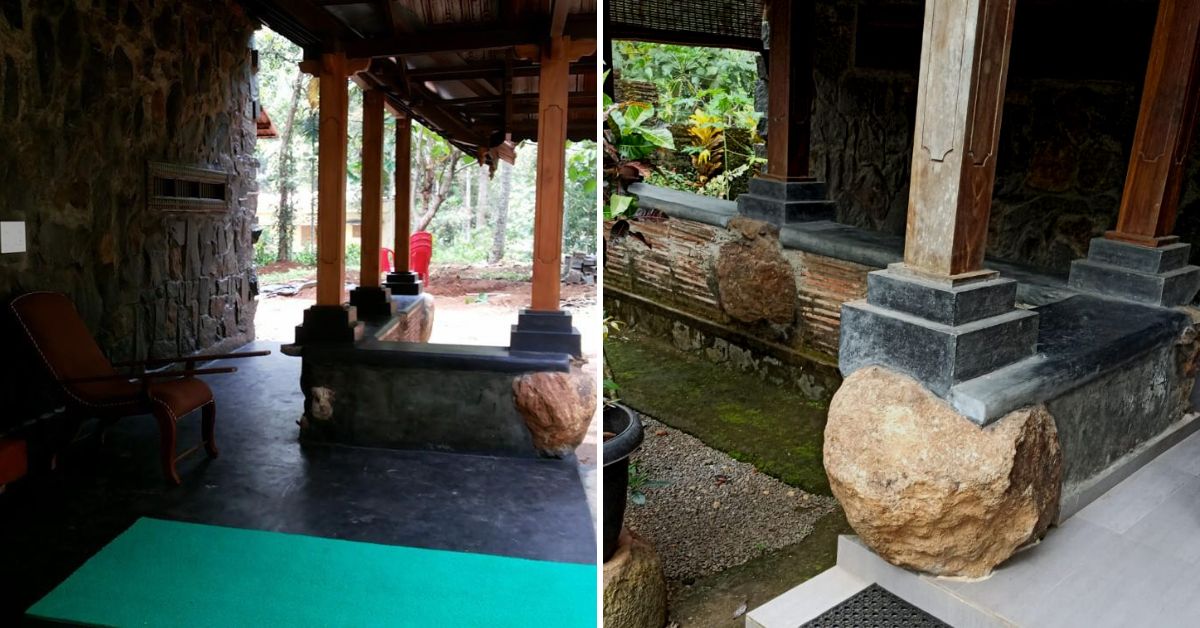
Just as she had hoped, the stones turned out to be useful when Joseph used them to build the house walls. Even the wooden pillars in the corridor have been raised over big boulders. “Around 20% of the house has been built using these stones,” says Joseph.
They have also used roof tiles to build the walls of the house. In fact, the top floor has been mostly built using stacked roof tiles glued together using cement.
“I use this method in most of my eco-friendly constructions. I source the old roof tiles from demolished houses and from places where they no longer serve any purpose. The roof tiles are stronger and more sustainable than regular burnt red bricks. Walls made of roof tiles are thicker, provide insulation, and, at the same time, keep the house cooler,” he explains, adding that around 50% of the house was built using roof tiles.

“The rest was built using cement bricks as the construction demanded it,” he adds.
Joseph says though there was cement involved in the construction, they were able to reduce the usage to around 30 per cent. “We have also used the filler slab technique on the ceiling of the first floor, where we used roof tiles in between the concrete, thereby reducing the concrete volume and providing better thermal insulation,” he explains.
The house is not plastered on the outside and has exposed stone walls and roof-tile walls. “Only the interiors have been plastered. Also, we have just polished the exterior of the roof-tile walls,” he points out.
Reusing and repurposing wood
Another highlight of the house is the sustainable usage of wood, which was all sourced either from their ancestral house or from old demolished houses.
“We haven’t bought any new furniture, we reused and repurposed old and broken furniture from our ancestral home. We even have a teapoy in our hall which was repurposed from a cradle from my husband’s childhood,” says Laya.
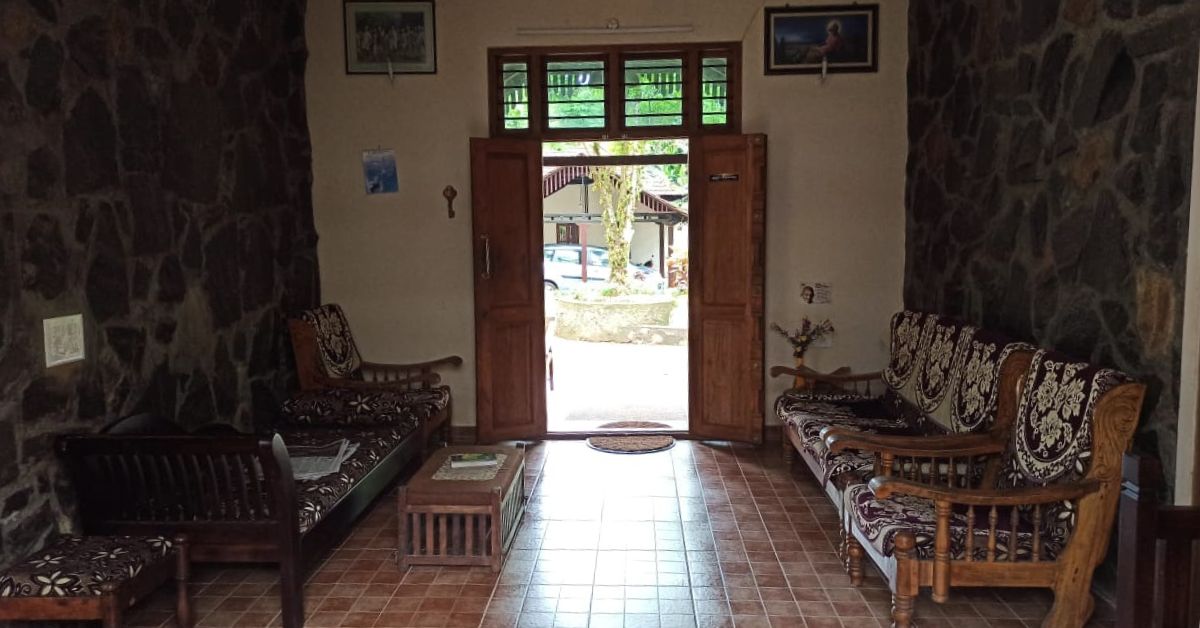
The wooden pillars bordering the grand corridor, which Laya says is her favourite spot in the whole house, were also procured from an old house.
“Whenever we’d visit an old house or a palace, we’d take inspiration from there. There is a small vertical window called kili-vaathil facing the corridor, from where people inside the house can view the front yard. It was inspired from traditional Kerala houses. When we conveyed it to Joseph, he included that after procuring it from an old demolished house,” she elaborates.

The house comprises a corridor, a living room, an open kitchen, a dining space, a courtyard and two bedrooms with attached bathrooms on the ground floor. The second floor has two bedrooms with a common bathroom.
“We don’t really need air conditioning here, mostly because of the green canopy surrounding our house and the usage of natural materials like stones and roof tiles,” says Laya.
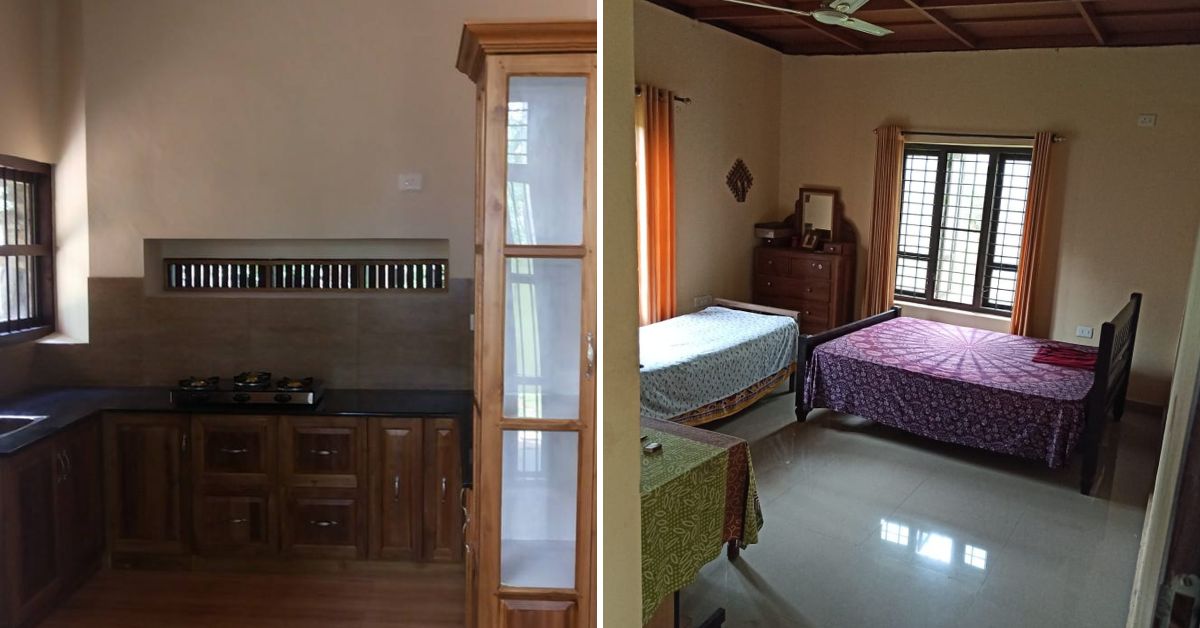
The flooring has been done using traditional terracotta tiles in most parts of the house except for the corridor, which was done using oxide. This was later replaced with tiles.
“We had to spend around Rs 20 lakh including the interiors which is comparatively low-budget,” she says.
“The overall cost of building a house of this size using conventional methods would have been at least 25 per cent more over 10 years ago,” says Joseph.
For more information, you can contact Joseph Mathew at +916282387075.
Edited by Divya Sethu
This story made me
- 97
- 121
- 89
- 167
Tell Us More
We bring stories straight from the heart of India, to inspire millions and create a wave of impact. Our positive movement is growing bigger everyday, and we would love for you to join it.
Please contribute whatever you can, every little penny helps our team in bringing you more stories that support dreams and spread hope.






